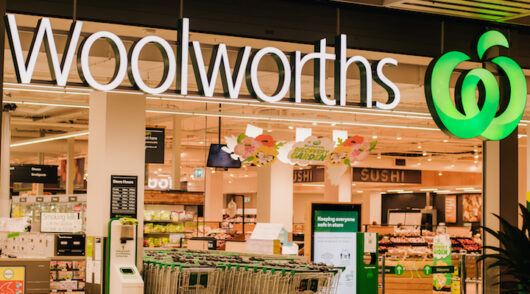For 2025, Miniso is doubling down on three core priorities: globalisation with local adaptation, product innovation driven by IP design, and a steadfast commitment to affordability. Robin Liu, VP and chief marketing officer, shares with Inside Retail how the brand is navigating key challenges, tapping into consumer trends, and shaping the future of retail in Asia. Inside Retail: What are your top three strategic priorities for 2025? Robin Liu: Miniso has three strategies as its top prioriti
iorities for 2025.
Focus on globalisation and localisation
Focus on product Innovation (IPdesign): Miniso’s goal is for sales of IP products to account for more than half of total sales by 2028.
Focus on affordability: With IP design as its core feature, Miniso competes globally through both cost leadership and product differentiation. While consistently adhering to the fundamental focus on affordability, Miniso continues to produce high-quality IP products.
IR: What are the biggest challenges on your radar this year and how did you navigate them?
RL:
Challenge: How to combine global products, channels, operations and marketing strategies with local market needs and culture.
Solution: Build a multinational team to ensure that product design, channels and operation models, and marketing strategies can adapt to local market needs.
In product design, Miniso has established global innovation centres in China, the US, Japan, and South Korea to provide specialised designs tailored to various markets. Additionally, Miniso manages products strategically based on five key regions: North America, Latin America, Southeast Asia, the Middle East, and Europe. This approach enables the company to cater swiftly to the specific preferences and needs of consumers in each respective area and across the globe.
Channels and operations are customised by market, using differentiated store types and operational strategies based on in-depth local market research to create unique, regionally suited models. In marketing, strategies are tailored to the cultural context of each region, ensuring brand messages resonate while reflecting a deep understanding and respect for local cultures.
Together, this approach exemplifies the power of global/local integration, throughout a well-structured global organisation.
IR: What is one consumer trend you’re planning on tapping into?
RL: As early as 2020, Mr. Ye Guofu, the founder of Miniso, proposed that “interest- driven consumption” would become the mainstream trend in future consumption. By implementing the IP strategy, the company has led interest-driven consumption and emerged as a pioneer in the innovative business model of global IP collection stores.
IR: What were the biggest highlights of 2024 for the group?
RL: Last year, Minio achieved milestones across its super store, super IP, and marketing strategies.
Miniso announced its innovative seven- layer store matrix at the 2024 Global Brand Strategy Upgrade Results Conference. These store formats are based on business opportunities and consumption trends playing two primary roles: first, to present IP scenarios that deepen consumers’ understanding of IP collection stores; second, to enhance category-specific experiences and solidify the brand’s position as the first choice for consumers across all levels and channels. This year, we have opened many super stores around the world, such as the Champs-Elysées flagship store in Paris, France, and the world’s largest store, in Jakarta. Since the launch of the first Miniso Land in Shanghai in October 2024, Miniso has expanded Miniso Land into many cities in China and Europe.
The super IP strategy was further deepened and implemented in 2024. To date, the company has formed partnerships with more than 150 world-renowned IPs, driving sales of IP-related products to exceed 800 million. Among these, the two major IPs, Chiikawa and Harry Potter, have received enthusiastic responses from consumers around the world. The company also continues to create and incubate its own IPs – Miniso Dundun and Mini Pen.
On the marketing front, Miniso seamlessly integrates users, products, and places through the drivers of IP collaboration, content and users. By partnering with top global IPs, Miniso has increased brand visibility and user engagement. For content, the brand employs innovative production and distribution strategies, supported by advanced digital tools, to achieve extensive brand reach and stronger user interaction. For users, precise and automated operations have built a robust membership system, fostering super users. These members, along with KOC [key opinion consumers] users, actively participate in co-creating products and content, driving sustained growth and global appeal.
IR: How do you see the retail landscape in Asia evolving in 2025?
RL: The customer behaviour reflects a coexistence of rational consumption and interest-driven consumption. While seeking emotional resonance with brands and products, they also prioritise cost-effectiveness. This trend is, in fact, consistent across the globe. The IP retail format is a quintessential example of interest-driven consumption. The global IP retail industry, valued at nearly 2 trillion RMB, remains highly fragmented. IP design retail holds immense growth potential. Accordingly, we have set a goal of IP products accounting for more than 50 per cent of sales by 2028.
IR: Are there any specific markets or segments in Asia that you see as critical growth opportunities?
RL: The goods economy/IP economy represents a growth opportunity. This trend revolves around two-dimensional culture and the fan economy. Grounded in young consumers’needs for emotional connection and cultural identity, it encompasses merchandise such as figurines, plush toys, badges and cards. Over time, it has evolved into a burgeoning economic sector. Data indicates that from 2023 to 2029, the scale of Asia’s two-dimensional industry is expected to grow from RMB 221.9 billion to RMB 590 billion, showing substantial growth potential.
Additionally, we view pet supplies as another highly promising sector.
IR: If you could summarise your strategy in one sentence, what would it be?
RL: Focus on interest-driven consumption, leverage IP as a distinctive feature, empower super categories and stores through seamless integration of content and users, and build a unique and efficient brand marketing ecosystem.
IR: What excites you most about the retail sector in Asia for 2025?
RL: Interest-driven consumption: Young consumers are placing greater emphasis on emotional connections and personalised shopping experiences, fueling the rapid expansion of the “IP economy” and “goods economy.” Retail brands can address this demand effectively through IP-themed stores and innovative consumption scenarios.and innovative consumption scenarios.
Globalisation: We have seen an increasing number of great Asian retail brands venturing into international markets and we believe that, in 2025, globalisation will continue to dominate as a key trend in the Asian retail industry.
This story first appeared in the Asian Retail Outlook 2025 report.







